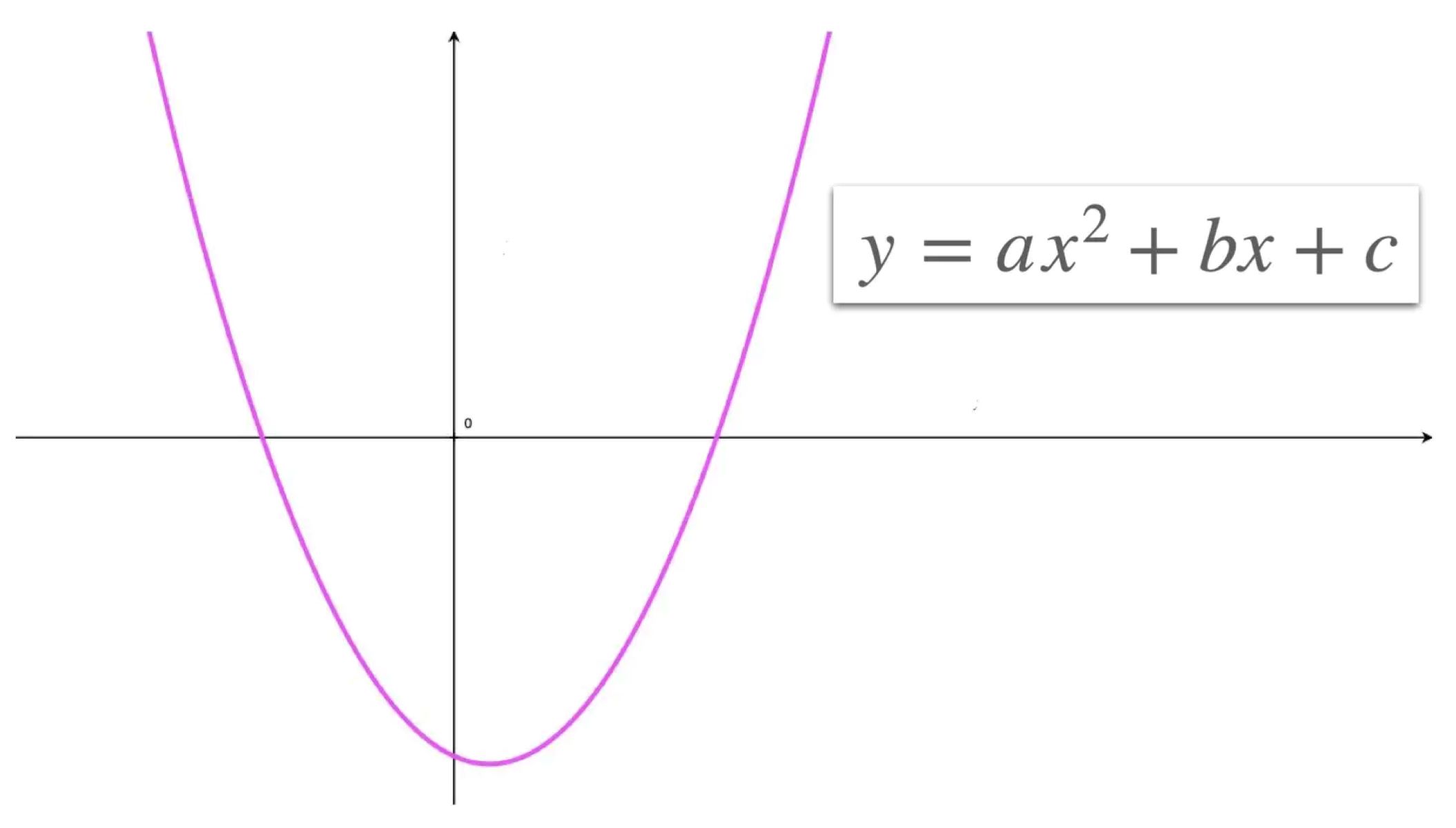

Education
How To Cite A Documentary
Published: February 26, 2024
Learn how to cite a documentary in your academic papers and research projects with our comprehensive guide. Get expert tips and examples for proper citation. Enhance your education with accurate documentary citations.
(Many of the links in this article redirect to a specific reviewed product. Your purchase of these products through affiliate links helps to generate commission for Regretless.com, at no extra cost. Learn more)
Table of Contents
Introduction
Citing sources is a fundamental aspect of academic and scholarly writing. When it comes to documentaries, proper citation is essential for acknowledging the work of filmmakers and providing credibility to your own research. Whether you're a student working on a research paper or a professional crafting a publication, understanding the correct format for citing a documentary is crucial.
In the digital age, documentaries have become a powerful medium for conveying information, sparking discussions, and shaping public opinion. From thought-provoking exposés to captivating historical retrospectives, documentaries offer a unique perspective on real-world events, social issues, and cultural phenomena. As such, they are valuable resources for researchers, educators, and anyone seeking to delve deeper into a particular subject.
Properly citing a documentary not only demonstrates respect for intellectual property but also allows readers to locate the original source and explore the content further. Moreover, it contributes to the transparency and integrity of your own work by providing a clear trail of references for readers to follow.
In this comprehensive guide, we will delve into the intricacies of citing documentaries in various academic styles, including MLA, APA, and Chicago. By the end of this article, you will have a solid grasp of the specific formatting requirements for each style, empowering you to accurately cite documentaries in your own writing. Let's embark on this journey to unravel the art of citing documentaries with precision and finesse.
Read more: How To Cite Pictures In Powerpoint
Understanding the documentary citation format
Citing a documentary involves acknowledging the creators, directors, producers, and other contributors who have played a pivotal role in bringing the film to life. The citation format for documentaries typically includes essential details such as the title, director, release year, and production company. Understanding the documentary citation format is crucial for maintaining academic integrity and providing readers with the necessary information to locate the source material.
When citing a documentary, it's essential to consider the specific style guide requirements, as different academic disciplines and institutions may adhere to distinct citation styles such as MLA, APA, or Chicago. Each style has its own set of rules governing the formatting of citations, including the placement of punctuation, italicization, and the order of elements within the citation.
In addition to the standard details like the title and director, citing a documentary may also involve including the names of relevant contributors, such as writers, narrators, and interviewees. Furthermore, the format may require specifying the type of documentary, whether it's a film, television series, or online streaming production, as this information can impact the citation structure.
Understanding the documentary citation format also entails recognizing the importance of providing a clear and accurate citation to enable readers to verify the source and delve deeper into the content. This involves meticulous attention to detail, ensuring that all relevant information is included and presented in a consistent and standardized manner.
Moreover, the documentary citation format extends beyond the basic bibliographic details, encompassing the need to indicate the specific time stamps or segments referenced within the documentary. This level of precision is particularly important when citing direct quotes, interviews, or specific scenes from the documentary, as it allows readers to pinpoint the exact source within the film.
In essence, mastering the documentary citation format involves a comprehensive understanding of the specific style guidelines, attention to detail, and a commitment to accurately representing the source material. By adhering to the prescribed citation format, writers can effectively acknowledge the creators of the documentary while providing readers with the means to access and evaluate the original content.
Citing a documentary in MLA style
Citing a documentary in MLA style requires adherence to specific formatting guidelines to ensure accuracy and consistency in the citation. When citing a documentary in MLA style, the goal is to provide comprehensive bibliographic information that allows readers to locate the source with ease. The following elements should be included in the MLA citation for a documentary:
Basic Format:
- Title: Begin the citation with the title of the documentary, italicized or underlined.
- Director: Include the name of the director, followed by a comma.
- Distributor: Specify the distributor of the documentary, followed by a comma.
- Year of Release: Provide the year of release, followed by a period.
Example:
"Title of the Documentary." Director's Name, Distributor, Year of Release.
Read more: The Accuracy Of Facts Presented In The Documentary “Adolf Hitler: The Greatest Story Never Told”
In-Text Citation:
When referencing the documentary within the text of the paper, the MLA in-text citation format typically includes the director's last name and the relevant time stamp or range of time stamps for the cited material.
Example:
(Director's Last Name 00:15:30-00:18:45)
Online Streaming:
For documentaries accessed through online streaming platforms, the MLA citation should include the name of the website or platform, followed by the URL if the documentary is accessed online.
Example:
"Title of the Documentary." Director's Name, Distributor, Year of Release. Website or Platform, URL.
Read more: How To Be A Player
Additional Contributors:
If the documentary involves significant contributions from individuals such as writers, narrators, or interviewees, their names should be included after the director's name, preceded by their respective roles.
Example:
"Title of the Documentary." Directed by Director's Name, performances by Actor's Name, Distributor, Year of Release.
Time Stamps:
When citing specific segments or quotes from the documentary, it is essential to include the relevant time stamps to pinpoint the exact location of the referenced material within the film.
Example:
(Director's Last Name 00:15:30-00:18:45)
By following these guidelines, writers can accurately cite documentaries in MLA style, ensuring that the necessary details are provided for readers to locate and verify the source material. Adhering to the prescribed MLA citation format demonstrates a commitment to academic integrity and the transparent representation of documentary sources within scholarly writing.
Read more: How To Draw Flames
Citing a documentary in APA style
Citing a documentary in APA style necessitates adherence to specific guidelines to ensure accuracy and consistency in the citation. The American Psychological Association (APA) style is commonly used in the social sciences and is known for its emphasis on author-date citations and a clear, concise writing style. When citing a documentary in APA style, the goal is to provide comprehensive bibliographic information that allows readers to locate the source with ease. The following elements should be included in the APA citation for a documentary:
Basic Format:
- Title: Begin the citation with the title of the documentary, italicized or underlined.
- Director: Include the name of the director, followed by a comma.
- Production Company: Specify the production company of the documentary, followed by a comma.
- Year of Release: Provide the year of release, followed by a period.
Example:
Title of the Documentary. (Year of Release). Directed by Director's Name. [Motion Picture]. Production Company.
Read more: The Accuracy Of Facts Presented In The Documentary “Adolf Hitler: The Greatest Story Never Told”
In-Text Citation:
When referencing the documentary within the text of the paper, the APA in-text citation format typically includes the director's last name and the relevant time stamp or range of time stamps for the cited material.
Example:
(Director's Last Name, Year)
Online Streaming:
For documentaries accessed through online streaming platforms, the APA citation should include the name of the website or platform, followed by the URL if the documentary is accessed online.
Example:
Title of the Documentary. (Year of Release). Directed by Director's Name. [Motion Picture]. Production Company. URL
Read more: How To Be A Player
Additional Contributors:
If the documentary involves significant contributions from individuals such as writers, narrators, or interviewees, their names should be included after the director's name, preceded by their respective roles.
Example:
Title of the Documentary. (Year of Release). Directed by Director's Name. Narrated by Narrator's Name. [Motion Picture]. Production Company.
Time Stamps:
When citing specific segments or quotes from the documentary, it is essential to include the relevant time stamps to pinpoint the exact location of the referenced material within the film.
Example:
(Director's Last Name, Year, 00:15:30-00:18:45)
By following these guidelines, writers can accurately cite documentaries in APA style, ensuring that the necessary details are provided for readers to locate and verify the source material. Adhering to the prescribed APA citation format demonstrates a commitment to academic integrity and the transparent representation of documentary sources within scholarly writing.
Citing a documentary in Chicago style
Citing a documentary in Chicago style requires adherence to specific formatting guidelines to ensure accuracy and consistency in the citation. The Chicago Manual of Style (CMOS) offers two distinct citation styles: the notes and bibliography system and the author-date system. When citing a documentary in Chicago style, it is essential to determine which system is preferred by the academic institution or publication. The notes and bibliography system is commonly used in the humanities and includes footnotes or endnotes, while the author-date system is prevalent in the natural and social sciences, featuring in-text citations.
Read more: How To Reheat Lasagna
Notes and Bibliography System:
When using the notes and bibliography system to cite a documentary in Chicago style, the goal is to provide comprehensive bibliographic information that allows readers to locate the source with ease. The following elements should be included in the Chicago-style citation for a documentary:
-
Basic Format:
- Title: Begin the citation with the title of the documentary, italicized or underlined.
- Director: Include the name of the director, followed by a comma.
- Production Company: Specify the production company of the documentary, followed by a comma.
- Year of Release: Provide the year of release, followed by a period.
-
Example:
- Title of the Documentary. Directed by Director's Name. Production Company, Year of Release.
-
In-Text Citation:
- When referencing the documentary within the text of the paper, the Chicago-style in-text citation format typically involves the use of footnotes or endnotes to provide additional information or commentary related to the citation.
-
Online Streaming:
- For documentaries accessed through online streaming platforms, the Chicago-style citation should include the name of the website or platform, followed by the URL if the documentary is accessed online.
-
Additional Contributors:
- If the documentary involves significant contributions from individuals such as writers, narrators, or interviewees, their names should be included after the director's name, preceded by their respective roles.
-
Time Stamps:
- When citing specific segments or quotes from the documentary, it is essential to include the relevant time stamps to pinpoint the exact location of the referenced material within the film.
Author-Date System:
In the author-date system of Chicago style, the documentary citation format follows a slightly different structure, emphasizing the inclusion of the director's name and the year of release within the in-text citation.
By following these guidelines, writers can accurately cite documentaries in Chicago style, ensuring that the necessary details are provided for readers to locate and verify the source material. Adhering to the prescribed Chicago citation format demonstrates a commitment to academic integrity and the transparent representation of documentary sources within scholarly writing.
Tips for citing a documentary accurately
Citing a documentary accurately requires attention to detail and adherence to the specific guidelines of the chosen citation style. To ensure precision and consistency in documentary citations, consider the following tips:
-
Verify the Source Information: Before citing a documentary, verify the accuracy of the essential details such as the title, director's name, production company, and release year. Cross-referencing multiple sources can help confirm the correctness of the information.
-
Consult the Official Style Guide: Each citation style, whether MLA, APA, or Chicago, has distinct formatting requirements. Consult the official style guide or reputable online resources to ensure that the documentary citation aligns with the prescribed guidelines.
-
Include Relevant Contributors: Acknowledge the contributions of individuals such as writers, narrators, and interviewees if they have played a significant role in the documentary. Including their names and roles adds depth to the citation and recognizes their involvement in the production.
-
Specify the Documentary Type: Differentiate between film documentaries, television series, or online streaming productions when citing the documentary. Clearly indicating the type of documentary provides context for the source material.
-
Provide Time Stamps for Specific References: When citing specific segments, quotes, or interviews within the documentary, include precise time stamps to guide readers to the exact location of the referenced content. This level of detail enhances the accuracy of the citation.
-
Adapt to Online Streaming Platforms: With the increasing availability of documentaries on online streaming platforms, adapt the citation format to include the name of the website or platform, along with the URL if the documentary is accessed online.
-
Consistency in Formatting: Maintain consistency in formatting throughout the citation, including the use of italics or underlining for the documentary title, proper punctuation, and the order of elements. Consistent formatting enhances the professionalism of the citation.
-
Review and Revise: After constructing the documentary citation, review it for completeness and accuracy. Revise any discrepancies or omissions to ensure that all necessary details are included.
By implementing these tips, writers can navigate the intricacies of citing documentaries with precision and accuracy, contributing to the transparency and credibility of their scholarly work.
Conclusion
In conclusion, mastering the art of citing documentaries is an essential skill for researchers, scholars, and writers across various disciplines. The process of accurately citing a documentary involves meticulous attention to detail, adherence to specific style guidelines, and a commitment to transparently representing the source material. Whether citing a thought-provoking exposé, a historical retrospective, or a captivating exploration of societal issues, documentaries serve as valuable resources for academic and scholarly endeavors.
By delving into the intricacies of documentary citation formats in MLA, APA, and Chicago styles, writers can effectively acknowledge the creators, directors, and contributors while providing readers with the necessary information to locate and explore the original source. The comprehensive bibliographic details, including the title, director, production company, and release year, form the foundation of a well-crafted documentary citation.
Moreover, the inclusion of additional contributors, such as writers, narrators, and interviewees, adds depth to the citation and recognizes the collaborative nature of documentary production. Furthermore, the precise inclusion of time stamps for specific references within the documentary enhances the accuracy and accessibility of the cited material, allowing readers to pinpoint the exact location of the referenced content within the film.
As the digital landscape continues to evolve, the adaptation of citation formats to accommodate online streaming platforms is becoming increasingly important. Ensuring that the citation includes the name of the website or platform, along with the URL if the documentary is accessed online, reflects the changing dynamics of accessing and referencing documentary sources.
In the academic and scholarly realm, adherence to the prescribed citation formats demonstrates a commitment to intellectual integrity and the ethical representation of sources. The tips provided for citing documentaries accurately serve as valuable guidelines for writers, empowering them to navigate the complexities of documentary citations with precision and finesse.
Ultimately, the act of citing documentaries goes beyond mere compliance with formatting rules; it embodies a respect for intellectual property, a dedication to transparency, and a recognition of the collaborative efforts that bring documentaries to life. By mastering the art of citing documentaries, writers contribute to the preservation of academic integrity and the dissemination of knowledge in a manner that honors the creators and enriches the scholarly discourse.









